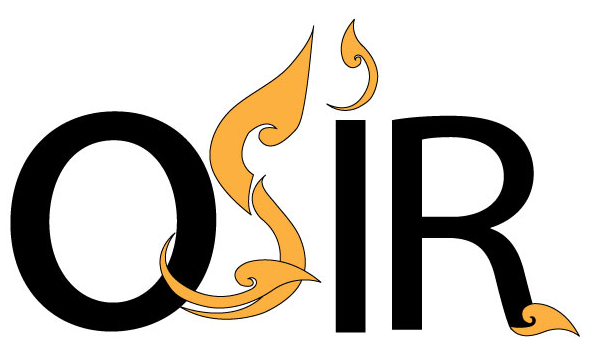Enhancing Digital Disease Surveillance in Thailand Using Information Technology, Data Engineering, Data Science, and Artificial Intelligence
DOI:
https://doi.org/10.59096/osir.v18i1.272056Keywords:
disease surveillance, information technology, data engineering, data science, artificial intelligenceAbstract
Recent advancements in data engineering, data science, and artificial intelligence have revolutionized disease surveillance systems globally. This study examines the implementation of these advancements in Thailand. We integrated these advancements to enhance the four key steps of public health surveillance: data collection, data analysis, data interpretation, and data dissemination. We expanded data collection to include data environment and integration, designing systems to manage multiple sources and facilitating seamless integration. To support analysis and interpretation, we adopted a design thinking approach and developed intuitive tools for exploring disease situations. We identified target users and described the data distribution mechanism. We integrated three major databases: digital disease surveillance, syndromic surveillance, and event-based surveillance, all managed by the Department of Disease Control. Data environments were divided into clusters for extraction, integration, and a data mart for specific use cases. Automated hourly extract-transform-load processes using Apache Airflow facilitated real-time data integration, ensuring seamless data management and timely updates. Data analysis solutions, including automated validation algorithms and business intelligence tools with user-friendly interfaces, were developed according to findings from the design thinking workshop. We developed open data published on dashboards and closed data managed through the Digital Export System. Artificial intelligence-enhanced early warning systems provided notifications of an outbreak to public health authorities via the instant messaging application LINE. In conclusion, the integration of information technology, data engineering, and data science has significantly enhanced Thailand's disease surveillance system, improving data collection, analysis, interpretation, and dissemination of results, leading to more efficient public health responses.
References
Centers for Disease Control and Prevention (US). Principles of epidemiology in public health practice; an introduction to applied epidemiology and biostatistics [Internet]. 3rd edition. [cited 2024 Nov 4]. <https://archive.cdc.gov/#/details?url=https://www.cdc.gov/csels/dsepd/ss1978/lesson1/section1.html>
Wang L, Liu Y, Chen H, Qiu S, Liu Y, Yang M, et al. Search-engine-based surveillance using artificial intelligence for early detection of coronavirus disease outbreak. J Big Data. 2023 Nov 11;10:169. doi:10.1186/s40537-023-00847-9.
Obe OO, Sarumi OA, Adebayo A. Enhancing epidemiological surveillance systems using dynamic modeling: a scoping review. Proceedings of the 13th International Conference on Soft Computing and Pattern Recognition; 2021 Dec 15–17; Seattle (WA), United States. Cham (CH): Springer; 2022. p. 512–23. doi:10.1007/978-3-030-96302-6_48.
Anjaria P, Asediya V, Bhavsar P, Pathak A, Desai D, Patil V. Artificial intelligence in public health: revolutionizing epidemiological surveillance for pandemic preparedness and equitable vaccine access. Vaccines. 2023 Jun 26;11(7):1154. doi:10.3390/vaccines11071154.
European Centre for Disease Prevention and Control. Digital technologies for the surveillance, prevention and control of infectious diseases - a scoping review of the research literature [Internet]. Stockholm: European Centre for Disease Prevention and Control; 2021 [cited 2024 Jul 30]. <https://www.ecdc.europa.eu/en/publications-data/digital-technologies-surveillance-prevention-and-control-infectious-diseases>
Fisher S, Rosella LC. Priorities for successful use of artificial intelligence by public health organizations: a literature review. BMC Public Health. 2022;22(1):2146. doi:10.1186/s12889-022-14422-z.
Centers for Disease Control and Prevention (US). Artificial Intelligence and Machine Learning: Technologies. [Internet]. Atlanta: Centers for Disease Control and Prevention; 2023 [cited 2025 Jan 15]. <https://www.cdc.gov/surveillance/technologies/index.html>
Zhang L, Guo W, Lv C. Modern technologies and solutions to enhance surveillance and response systems for emerging zoonotic diseases. Sci One Health. 2024;3:100061. doi:10.1016/j.soh.2023.100061
Zahlan A, Ranjan R, Hayes D. Artificial intelligence innovation in healthcare: literature review, exploratory analysis, and future research. Technology in Society. 2023;74:102321. doi:10.1016/j.techsoc.2023.102321.
Division of Epidemiology, Department of Disease Control. Guidelines for reporting communicable diseases under surveillance: Digital format in accordance with the Communicable Disease Act B.E. 2558. Paper presented at: Meeting of the guidelines for submitting epidemiological surveillance data in digital format (D506); 2023 Sep 21; Bangkok, Thailand. Thai.
Division of Epidemiology, Department of Disease Control. Case definition for Communicable Diseases Surveillance, Thailand, 2020. Nonthaburi: Division of Epidemiology, Department of Control (TH); 2020. Thai.
Wongsanuphat S, Sangwanloy S, Sopha P, Buangsuang W, Denduang S, Thongplean A, et al. Enhancingcoronavirus disease (COVID-19) surveillance system through information technology, Thailand, 2020. OSIR. 2020 Sep;13(3):90–100.
Wongsanuphat S, Jitpeera C, Iamsirithaworn S, Laosiritaworn Y, Thammawijaya P. An Evaluation of the Enhanced Information System for COVID-19 Surveillance in Thailand, 2020: A Pre-Post Intervention Comparison. OSIR. 2020 Sep;13(3):101–9. doi:10.59096/osir.v13i3.262806.
Laudon KC, Laudon JP. Management information systems: managing the digital firm. 16th ed. London: Pearson; 2021.
Gorton I. Essential software architecture. 2nd ed. Heidelberg: Springer; 2011.
Provost F, Fawcett T. Data science for business. Sebastopol (CA): O’Reilly Media; 2013.
Russell S, Norvig P. Artificial intelligence: a modern approach. 4th ed. London: Pearson; 2021.
Malaikham J, Suriya S, Prommongkhol J, Wongsuwanphon S, Wongsanuphat S. Development of innovations for analyzing surveillance situations of communicable diseases in Thailand using the design thinking process. Weekly Epidemiological Surveillance Report. 2025;56(3): 1–15. doi:10.59096/wesr.v56i3.3571.
Yotwattana P, Tepsittha K. The development of a digital epidemiological surveillance reporting platform. Weekly Epidemiological Surveillance Report. 2023;54:717–30.
Centers for Disease Control and Prevention (US). BioSense platform [Internet]. Atlanta: Centers for Disease Control and Prevenion: 2024 Apr 22 [cited 2024 Nov 4]. <https://www.cdc.gov/nssp/php/about/about-nssp-and-the-biosense-platform.html>
Doig K, Papenfuss AT, Fox S. Clinical cancer genomic analysis: data engineering required. Lancet Oncol 2015 Sep;16(9):1015–7. doi:10.1016/s1470-2045(15)00195-3.
Cui C, Chou SS, Brattain L, Lehman CD, Samir AE. Data engineering for machine learning in women’s imaging and beyond. AJR Am J Roentgenol. 2019 Jul;213(1):216–26. doi:10.2214/ajr.18.20464.
Zhang Q. Data science approaches to infectious disease surveillance. Philos Trans A Math Phys Eng Sci. 2021 Nov 22;380(2214):20210115. doi:10.1098/rsta.2021.0115.
Hanan M, Galal GEH. Design thinking using qualitative data analysis and machine learning. Proceedings of the 2023 13th International Conference on Information Communication and Management. 2023 Nov 7; Cairo, Egypt. New York: Association for Computing Machinery; 2024. p. 40–7. doi:10.1145/3640429.3640437.
Nguyen AH, Hoang TG, Nguyen LQ, Thi Pham HM. Design thinking-based data analytic lifecycle for improving management control in Banks. Technology Analysis & Strategic Management. 2022 Jul 14;36(7):1508–23. doi:10.1080/09537325.2022.2100754.
Drzyzga G, Harder T. User-centered design and iterative refinement: Promoting student learning with an interactive dashboard. Proceedings of the 19th International Conference on Web Information Systems and Technologies. 2023 Nov 15–17; Rome, Italy. Setubal (PT): Science and Technology; p. 340–6. doi:10.5220/0012191300003584
Lennox-Chhugani N. A user-centred design approach to integrated information systems – a perspective. Int J Integr Care. 2018;18(2):15. doi:10.5334/ijic.4182.
Areechokchai D, Sayumpurujinan S. Developing data visualization for hospital-based surveillance under the Communicable Disease Act B.E. 2558. Weekly Epidemiological Surveillance Report. 2023;55(9):1–12. doi:10.59096/wesr.v55i9.3247.
Althomsons SP, Winglee K, Heilig CM, Talarico S, Silk B, Wortham J, et al. Using machine learning techniques and national tuberculosis surveillance data to predict excess growth in genotyped tuberculosis clusters. Am J Epidemiol. 2022;191(11):1936–43. doi:10.1093/aje/kwac117.
Panja M, Chakraborty T, Kumar U, Liu N. Epicasting: an ensemble wavelet neural network for forecasting epidemics. Neural Netw. 2023;165:185–212. doi:10.1016/j.neunet.2023.05.049.
Didi Y, Walha A, Wali A. Data-driven model for influenza prediction incorporating environmental effects. Proceedings of the 5th International Conference on Internet of Things, Big Data and Security; 2020 May 7–9; Prague, Czech Republic. Setubal (PT): Science and Technology; 2022. p. 15–24. doi:10.5220/0009325500150024.
Shinde S, Yadav S, Somvanshi A. Epidemic outbreak prediction using machine learning model. Proceedings of the 5th International Conference on Advances in Science and Technology (ICAST); 2022 Dec 2-3, Mumbai, India. New York: IEEE; 2023. p. 127–32. doi:10.1109/ICAST55766.2022.10039594.
El Morr C, Ozdemir D, Asdaah Y, Saab A, El-Lahib Y, Sokhn ES. Ai-based epidemic and pandemic early warning systems: a systematic scoping review. Health Informatics J. 2024 Jul-Sep;30(3):14604582241275844. doi:10.1177/14604582241275844.
Ahn E, Liu N, Parekh T, Patel R, Baldacchino T, Mullavey T, et al. A mobile app and dashboard for early detection of infectious disease outbreaks: development study. JMIR Public Health Surveill 2021;7(3):e14837. doi:10.2196/14837.
Mohanty B, Chughtai A, Rabhi F. Use of mobile apps for epidemic surveillance and response – availability and gaps. Global Biosecurity. 2019 Sep 11;1(2):37. doi:10.31646/gbio.39.
Sun S, Shaw M, Moodie EEM, Ruths D. The epidemiological impact of the Canadian covid alert app. Can J Public Health. 2022;113(4):519–27. doi:10.17269/s41997-022-00632-w.
Python Software Foundation. Python: a programming language [Internet]. Version 3.13.2. Beaverton (OR): Python Software Foundation; [cited 2025 Mar 16]. <https://www.python.org/>
Tableau Software. Tableau Desktop [Internet]. Version 2024.3.4. Seattle (WA): Salesforce; [cited 2025 Mar 16]. <https://www.tableau.com/>
Downloads
Published
How to Cite
Issue
Section
License
Copyright (c) 2025 Outbreak, Surveillance, Investigation & Response (OSIR) Journal

This work is licensed under a Creative Commons Attribution-NonCommercial-NoDerivatives 4.0 International License.









